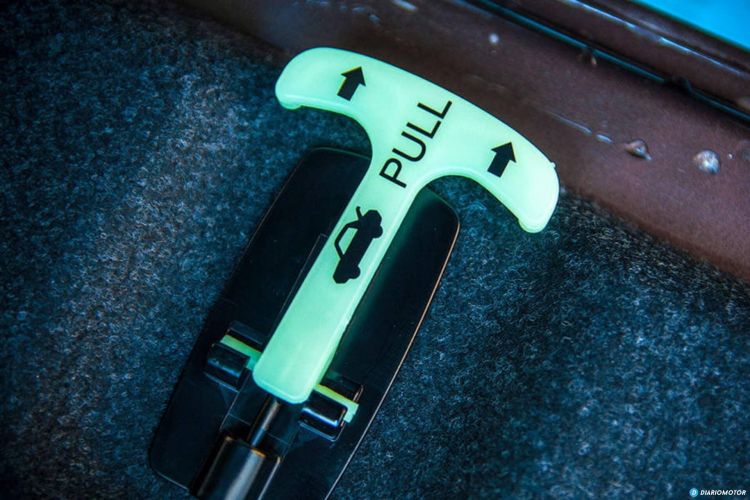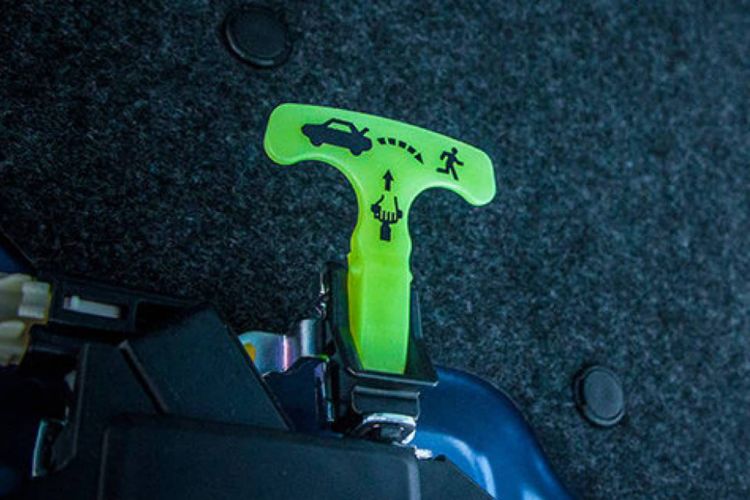The differences between the American and European car markets are not only reduced to the exclusive models for one or the other side of the pond. There is also, features that only occur there or here. One of them is found in the trunks of all cars in the United States and is capable of saving a person’s life.
The National Highway Traffic Safety Administration (NHTSA) is a body that is part of the Department of Transportation and depends on the US Government: something like the North American DGT. One of its norms, the 401, establishes the safety standards which should include cars sold on US soil. Among the mandatory requirements is an emergency key that must be located in the trunk.
It is not a key to use. It is actually a system that allows the loading area to be opened from the inside: It is made up of a cord made of a special plastic and a phosphorescent or photoluminescent handle, that is, it glows in the dark. By pulling it, the person inside can open the gate and get out. Over time, some brands have replaced this mechanism with a backlit button.
As we said, this security key must be present in all cars sold in the United States with a trunk for luggage, physically separated from the interior (by the backrests of the rear row or by a panel) and with enough size to fit the ‘dummy’ of a boy or a girl. Models with a front hood must also add a system that prevents opening when the vehicle is running.
Petitions and NHTSA
The question is logical: why do the trunks of cars in the United States have an anti-hijacking system? And the answer is somewhat more complete than it seems at first glance. The history of this security system starts in 1984: 38 years ago, NHTSA asked car brands to incorporate it based on a study where the danger of someone getting trapped in the trunk was clear.
Shortly after, this same body backed down: The chances of an incident like that occurring existed, but they were remote because the hydraulic dampers that are installed in the gate would prevent it. And if someone played hide-and-seek in this part of the car, it was their responsibility: not the manufacturer’s.
There remained, however, a loose fringe: the use of the trunk in kidnappings. The NHTSA found no statistics recording how many arrests had been made under this ‘modus operandi’. According to his research, in fourteen years they had only received 24 requests to install this system alluding to this fact. The case seemed closed.
summer of 1998
Everything changed in 1998 when the United States Congress asked the NHTSA for a report on the benefits of installing this opening system in the trunk. Coinciding with this request, a series of events occurred that accelerated the entire process: between July and August of that year, eleven children lost their lives after being trapped in the trunk of a car while they were playing.
The NHTSA formed a commission of experts in which all the actors involved in the process were involved. That teamwork resulted in the creation of a quick and accessible opening system in the dark of such a small enclosed space: This is how Regulation 401 established the obligation to install an emergency key in all trunks.


